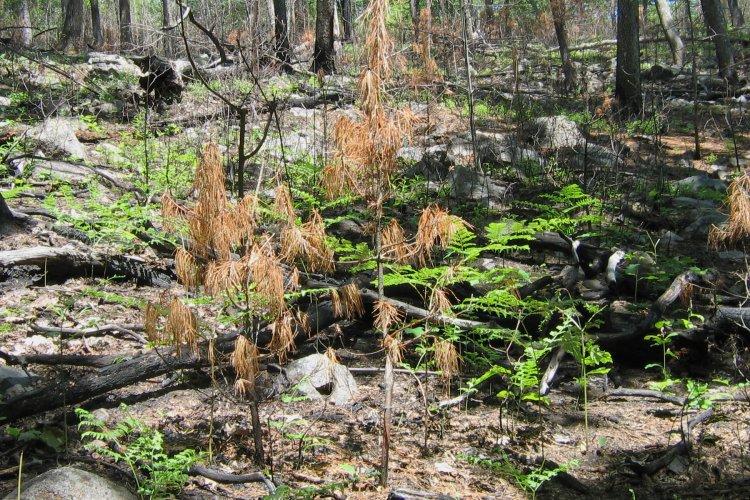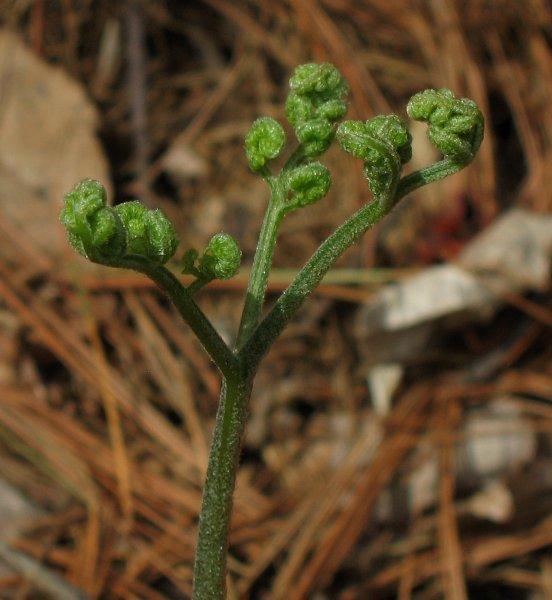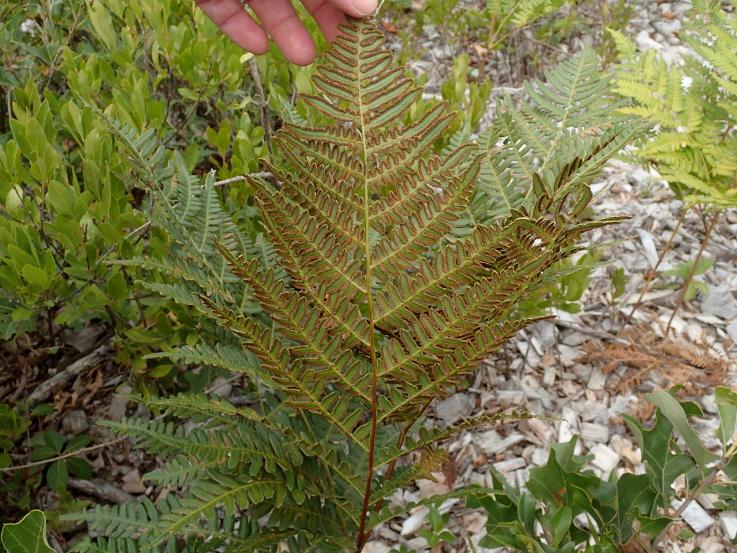Bracken Fern
Pteridium aquilinum
Perhaps the most widespread species of all vascular plants (with the exception of some annual weeds), bracken fern is believed
to be native on all continents. This aggressive plant tolerates a wide range of soil acidity from strongly acid to circumneutral.
It often invades pastures and cultivated fields as a weed. In the natural communities of New England, it forms large colonies
at exposed sites, in pine barrens and woodlands, and at edges of deciduous woods. Colonies originate from the underground
network of powerful rhizomes, and roots can go as deep as 10 ft in search for moisture. Unlike many other ferns, bracken is
not restricted to moist places and can do well in upland dry habitats. In the fire-prone pine barrens, bracken is one of the
first to recover after fires and then often becomes a dominant. It also tolerates cold spills in spring by promptly sending
out another generation of sprouts instead of ones killed by the frost. Humans have used bracken for thatch, livestock feeding,
bedding, potash production, and even for food, cooking with immature fronds (leaves) known as "fiddleheads" or "croziers";
however, bracken has been shown to contain carcinogenic compounds harmful both for humans and animals. The coarse bracken
fronds (leaves) can grow to 3 ft tall (sometimes even taller), their blades uniquely shaped as equilateral triangles. The
blades are divided into 3 parts, each part, in turn, divided into parts (pinnae), which are divided into parts (pinnules)
yet another time. Like any other fern, bracken produces spores, though it resorts to spore production only very rarely, nearly
always spreading by just the rhizome.

Bracken as a solitary proprietor after a fire, Blue Hills Reservation, Quincy

Young bracken frond (fiddleheads), May 2

A rare occasion: fertile bracken frond (i.e., frond producing spores), Plymouth